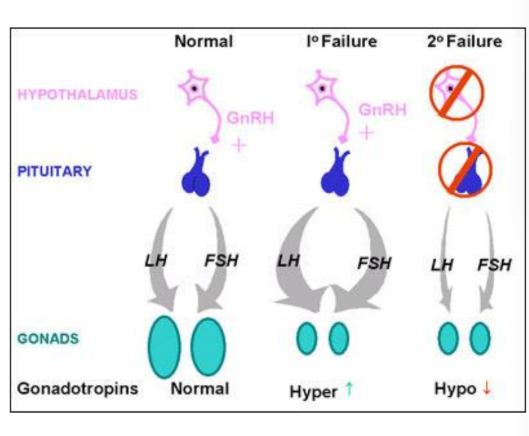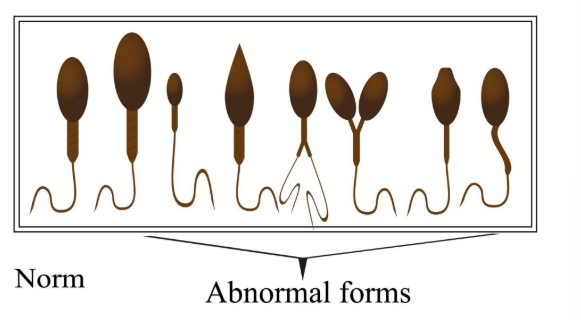Diseases of the testes system
1/11
There's no tags or description
Looks like no tags are added yet.
Name | Mastery | Learn | Test | Matching | Spaced |
|---|
No study sessions yet.
12 Terms
Hypogonadism
Diminshed functional activity of the gonads can result in:
Decreased biosynthesis of sex hormones — defective primary or secondary sexual development
impaired spermatogenesis/ovulation - partial or complete infertiltiy possible
congential or acquired

Cryptorchidisim
Undescended testicle
During prenatal development, testes migrate from near kindey
Corrected withs urgery shortly after birth
Can lead to infertility and increased risk of testicular cancer
Healthy vs. Unhelahty sperm
abnormal shape
low count
reduced fertilization rate
IVF
This can
impact ability to swim and fertilize
head defects
neck defects
tail defects

What happens with a low sperm count
<15 million/mL
symptoms include watery or semen
reduced chances of fertility — but not zero! Always use protection
To avoid: Eat a healthy diet (including zinc), drink
lots of water, avoid alcohol and drugs, no hot tubs
or tight pants, avoid pesticides, exercise
How does IVF work?
To treat sperm infertility
Collection of sperm and direct insertion into uterus is less expensive and less sucessful
INtracytoplasmic sperm injection is very expensive, very efficient, and only select the strongest fertilized eggs for implantation
What is the cost of IVF?
$10-25K per cycle
Increased costs for genetic testing, ICSI, surgical procedures
Estimated 95% non-viable, multiple rounds expected (especially if 35+)
You must also account for the emotional response
Benign prostate hyperplasia
Common in older age
Enlarged prostate
troubled and frequent urination
Medications include
alpha blockers (relax muscles)
phosphodiesterase inhibitors (+ ED)
Alpha reductase inhibitors (lower T → DHEA)
Prostatitis
Infection of the prostate
Painful urination, pelvic pain
Actue (bacterial infection, similar to other UTI symptoms)
Chronic (greater than 3 months, infection or nerve damage)
Treat with antibiotics
Prostate cancer
98% survival rate
Primary treatment: radiation
Detection
PSA testing (prostate specific antigen)
Painful urination
Prostate exams beginning at age 50 (Note increased incidence of early prostate
cancer, will likely begin testing earlier with family history of cancer)
Testicular cancer
most common malignancy 20-40 years
self-check monthly
95% survival rate
primary treatment is removal of testicle
How to clinically determine potential prostate issues
1. Rectal exam and palpation
a. Determine if the prostate feels
enlarged, abnormal in shape, etc
2. PSA test
a. Blood test that detects Prostate
Specific Antigen levels in blood
b. Note that this increases normally
with age, must compare to
age-matched expected values
3. Ultrasound -can be performed, but less
informative
4. Transurethral resection of prostate
(TURP)